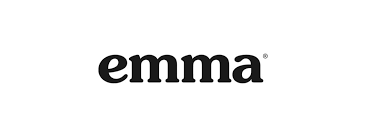In the digital marketing realm, where email stands as a steadfast pillar, choosing the right tool to orchestrate your campaigns is crucial. Today, we’re putting two notable contenders under the microscope: Emma Email Marketing Tool and ReachMail. Both platforms come with their unique flair and functionalities, but which one aligns best with your marketing needs? Let’s embark on a detailed exploration, starting with a pivotal aspect of these tools.
| Emma Email Marketing Tool | ReachMail |
|---|---|
 |  |
| G2 Score – 4.0 out of 5 stars | G2 Score – 4.0 out of 5 stars |
| TrustRadius Score – 8.6/10 | TrustRadius Score – 10/10 |
User Interface and Experience
Emma’s Intuitive Layout vs ReachMail’s Functional Design
The user interface of an email marketing tool is much like the dashboard of a car; it dictates the ease and enjoyment of the journey ahead. Let’s dive into how Emma and ReachMail fare in providing a user-friendly experience and efficient navigation.
Emma: Simplicity Meets Elegance
Emma is renowned for its intuitive and clean interface, which makes it a favorite among users who appreciate simplicity and efficiency. The platform offers a straightforward dashboard that guides users effortlessly through various functionalities, making the process of crafting and managing email campaigns seamless and enjoyable.
Emma’s email editor stands out with its user-friendly drag-and-drop functionality. Even those with minimal design experience can create professional-looking emails. The array of customizable templates further aids users in developing emails that align with their brand’s visual identity, all without requiring extensive technical skills.
Managing subscriber lists in Emma is also a straightforward process. The platform allows efficient organization and segmentation of contacts, enabling targeted and effective email campaigns. This ease of managing contacts is crucial for executing personalized and efficient marketing strategies.
ReachMail: Functional Depth for the Detail-Oriented
ReachMail, on the other hand, offers a more functionally rich interface. While it packs a suite of advanced features, it might present a steeper learning curve, particularly for those new to email marketing or who prefer a more minimalist approach.
ReachMail’s strength lies in its comprehensive feature set, which includes detailed segmentation, advanced automation capabilities, and thorough analytics. These features, though powerful, might require more time and effort to master, but for users who value depth over simplicity, ReachMail offers the tools to create highly customized and data-driven email campaigns.
The platform also provides a wide range of templates, but customizing these to fit your brand’s needs might not be as intuitive as Emma’s editor. This aspect is something to consider for those who place high value on ease of use and quick campaign setup.
Email Automation and Personalization
Emma’s Tailored Touch vs ReachMail’s Advanced Techniques
In the vibrant world of email marketing, the twin powers of automation and personalization are key to captivating your audience. Let’s delve into how Emma and ReachMail enable you to harness these crucial features, comparing their approaches to automation and personalization.
Emma: Crafting Connections Through Personalized Automation
Emma is celebrated for its ability to deliver personalized email experiences that resonate deeply with your audience. The platform offers a suite of tools enabling you to tailor messages based on subscriber data, making each communication feel genuinely personal and relevant.
Automation in Emma is designed for both simplicity and effectiveness. The platform allows you to set up automated email sequences that are triggered by specific subscriber actions or behaviors. This can range from welcome messages for new subscribers to targeted offers for your most engaged customers, ensuring that your communication is always timely and pertinent.
Furthermore, Emma’s advanced segmentation tools let you categorize your audience into distinct groups based on various criteria. This precise segmentation is crucial for creating targeted campaigns, significantly boosting engagement and conversion rates.
ReachMail: Precision and Versatility in Automation
ReachMail takes a more expansive approach to email automation and personalization. It offers a range of tools and features designed for businesses seeking depth and customization in their email marketing strategies.
With ReachMail, you can create intricate, behavior-triggered email sequences. These advanced automation capabilities allow for a high degree of personalization, catering to the specific needs and actions of your subscribers.
In terms of personalization, ReachMail provides robust segmentation capabilities, enabling you to tailor your emails to the minutest details of your subscriber’s preferences and behaviors. This results in highly targeted and relevant email content, maximizing the impact of your campaigns.

Related: Check out our free SEO suite

Analytics and Reporting
Emma’s Accessible Insights vs ReachMail’s Comprehensive Analysis
In email marketing, the strength of your strategy often hinges on the insights you can glean from analytics and reporting. These tools are the compass that guides your decisions and refinements. Let’s compare how Emma and ReachMail equip you with these crucial tools, highlighting their approaches to analytics and reporting.
Emma: Intuitive and Actionable Analytics
Emma emphasizes making analytics both accessible and actionable. The platform offers essential metrics like open rates, click-through rates, and unsubscribe rates, presenting them in an easily digestible format. This approach is particularly beneficial for businesses that need quick and straightforward insights to guide their email marketing strategies.
Emma’s analytics dashboard is designed for clarity, making it easy for marketers of all levels to interpret data and make informed decisions. This ease of use is crucial for quick, data-driven adjustments to your campaigns.
Moreover, Emma includes A/B testing features, enabling you to experiment with different elements of your emails to find what resonates best with your audience. This feature is essential for continually refining your strategy and improving the effectiveness of your email campaigns.
ReachMail: Detailed Data for In-Depth Insights
ReachMail takes a more granular approach to analytics, catering to businesses that require in-depth insights into their email marketing campaigns. The platform provides a suite of advanced analytics tools that offer comprehensive data on various aspects of your email marketing efforts.
With ReachMail, you can delve into detailed analytics, examining subscriber behavior, campaign performance, and more. This level of analysis is invaluable for businesses that base their marketing strategies on detailed data analysis and aim to optimize every element of their email marketing for maximum impact.
ReachMail’s reporting tools allow for customization, enabling you to focus on the metrics that are most relevant to your business goals. This customization is a significant advantage for businesses with specific reporting needs or those aiming to align their email marketing metrics closely with broader business objectives.
Pricing and Plans
Emma’s Flexible Solutions vs ReachMail’s Structured Approach
When it comes to choosing an email marketing tool, the pricing structure is a critical factor that can greatly influence your decision. It’s important to consider not just the cost but also the value and scalability each platform offers. Let’s explore the pricing models of Emma and ReachMail to understand which might be the best financial fit for your marketing needs.
Emma
- Pricing is typically tiered based on features and list size:
- Pro Plan: Offers automation, segmentation, and analytics. Pricing usually starts at around $89/month.
- Plus Plan: Includes additional features like landing pages and A/B testing. Pricing is higher and usually requires a quote from Emma.
- Enterprise Plan: Custom pricing for advanced needs like custom integrations and dedicated support.
ReachMail
- Pricing is based on the volume of emails sent per month:
- Plans start from around $10 per month for up to 7,500 emails, with various tiers up to over $70 per month for higher volumes.
- Features include list management, detailed reporting, and advanced segmentation.
- Custom enterprise solutions are also available, which include additional features and dedicated support.
Emma: Adaptable Pricing for Diverse Needs
Emma offers a range of pricing plans, each designed to accommodate the varied needs of different businesses. This flexibility is one of Emma’s key strengths, allowing businesses to choose a plan that aligns with their subscriber count, feature requirements, and budget constraints.
Emma’s tier-based pricing structure means you can start with a basic plan and scale up as your business grows. This scalability is advantageous, particularly for small to medium-sized businesses or those in a growth phase, as it provides the flexibility to expand email marketing efforts in line with business growth.
For larger enterprises or businesses with specific needs, Emma also offers custom pricing solutions. This ensures that larger organizations can access a solution tailored to their unique requirements, providing value for their investment.
ReachMail: Straightforward Pricing for Comprehensive Features
ReachMail presents a more structured pricing model, offering a clear and straightforward approach to its packages. This model is typically based on the volume of emails sent and the number of subscribers, making it easy for businesses to understand what they’re paying for and plan accordingly.
One of the advantages of ReachMail’s pricing structure is its simplicity. With clearly defined packages, businesses can quickly determine which plan suits their needs, reducing the complexity often associated with pricing tiers and add-ons.
Despite its straightforward packages, ReachMail does not compromise on features. It offers a comprehensive set of tools, including advanced automation capabilities, detailed segmentation, and robust analytics, making it a valuable tool for businesses that need a wide range of functionalities at a predictable cost.
Integration and Scalability
Emma’s Seamless Ecosystem vs ReachMail’s Robust Functionality
In the fast-paced world of digital marketing, the ability to integrate seamlessly with other business tools and scale with your growing needs is crucial for an email marketing platform. Let’s dive into how Emma and ReachMail perform in terms of integration capabilities and scalability.
Emma: Effortless Integration for a Unified Marketing Strategy
Emma stands out for its seamless integration with a wide range of marketing tools and systems, ensuring a cohesive and efficient marketing strategy. The platform’s ability to effortlessly connect with CRM systems, e-commerce platforms, social media channels, and other essential marketing tools enhances its overall functionality and user experience.
These integrations allow for smooth data flow between Emma and other systems, making it easier to create more targeted and effective email campaigns. By leveraging data from various sources, Emma helps you craft personalized content, thus enhancing the impact of your marketing efforts.
In terms of scalability, Emma is designed to grow with your business. Whether it’s expanding your subscriber list or incorporating more complex marketing strategies, Emma’s platform is capable of adapting to these changing needs. This scalability ensures that Emma remains a relevant and effective tool as your business evolves.
ReachMail: Comprehensive Integration for Diverse Marketing Needs
ReachMail offers robust integration capabilities, making it a strong contender for businesses that rely on a diverse set of tools for their marketing and sales activities. The platform’s ability to integrate with various systems, including CRM platforms, analytics tools, and productivity software, enhances its versatility and effectiveness.
This extensive range of integration options with ReachMail is beneficial for businesses looking to create a comprehensive marketing tech stack. The ability to synchronize data across different platforms enables you to gain deeper insights and create more data-driven and effective marketing campaigns.
When it comes to scalability, ReachMail is well-equipped to handle the growing demands of a business. The platform is capable of managing increasing subscriber numbers and more sophisticated marketing requirements, making it a suitable choice for growing businesses or those with evolving marketing needs.
Conclusion
In conclusion, when comparing Emma Email Marketing Tool and ReachMail, it’s clear that each platform caters to distinct needs and preferences, making the choice highly dependent on your specific business requirements and marketing goals.
Emma stands out for its intuitive interface, ease of use, and excellent integration capabilities. It’s an ideal choice for businesses seeking a straightforward, user-friendly email marketing solution that still offers a robust set of features. Emma’s flexible pricing plans and scalable solutions cater to a wide range of business sizes, making it a versatile option for those looking to grow their marketing efforts alongside their business.
ReachMail, on the other hand, offers a more structured approach with comprehensive features and robust integration capabilities. Its straightforward pricing model and comprehensive toolset make it a strong contender for businesses that require detailed control over their email marketing campaigns and need a tool that can seamlessly integrate with a complex marketing tech stack. ReachMail’s scalability makes it suitable for growing businesses or those with more advanced email marketing needs.
Both Emma and ReachMail provide unique advantages that can significantly enhance your email marketing strategy. Emma is preferable for businesses that value simplicity and ease of use, while ReachMail is more suited for those looking for detailed analytics, comprehensive features, and extensive integration capabilities.
Ultimately, the choice between Emma and ReachMail should be guided by your business’s specific marketing needs, the level of sophistication required in your email campaigns, and the importance of seamless integration with other marketing tools. By carefully considering these factors, you can select the email marketing tool that best aligns with your goals and helps you effectively engage with your audience, driving success in your digital marketing endeavors.
Read Next:
- Keywords to Power Your Green Energy SEO Strategy
- Importance of Reviews and Ratings in Green E-Commerce SEO
- Optimizing Product Descriptions for Eco-friendly Products
- SEO Best Practices for Green E-Commerce Sites
- Geo-Localization Techniques for Global Sustainable Markets






















Comments are closed.